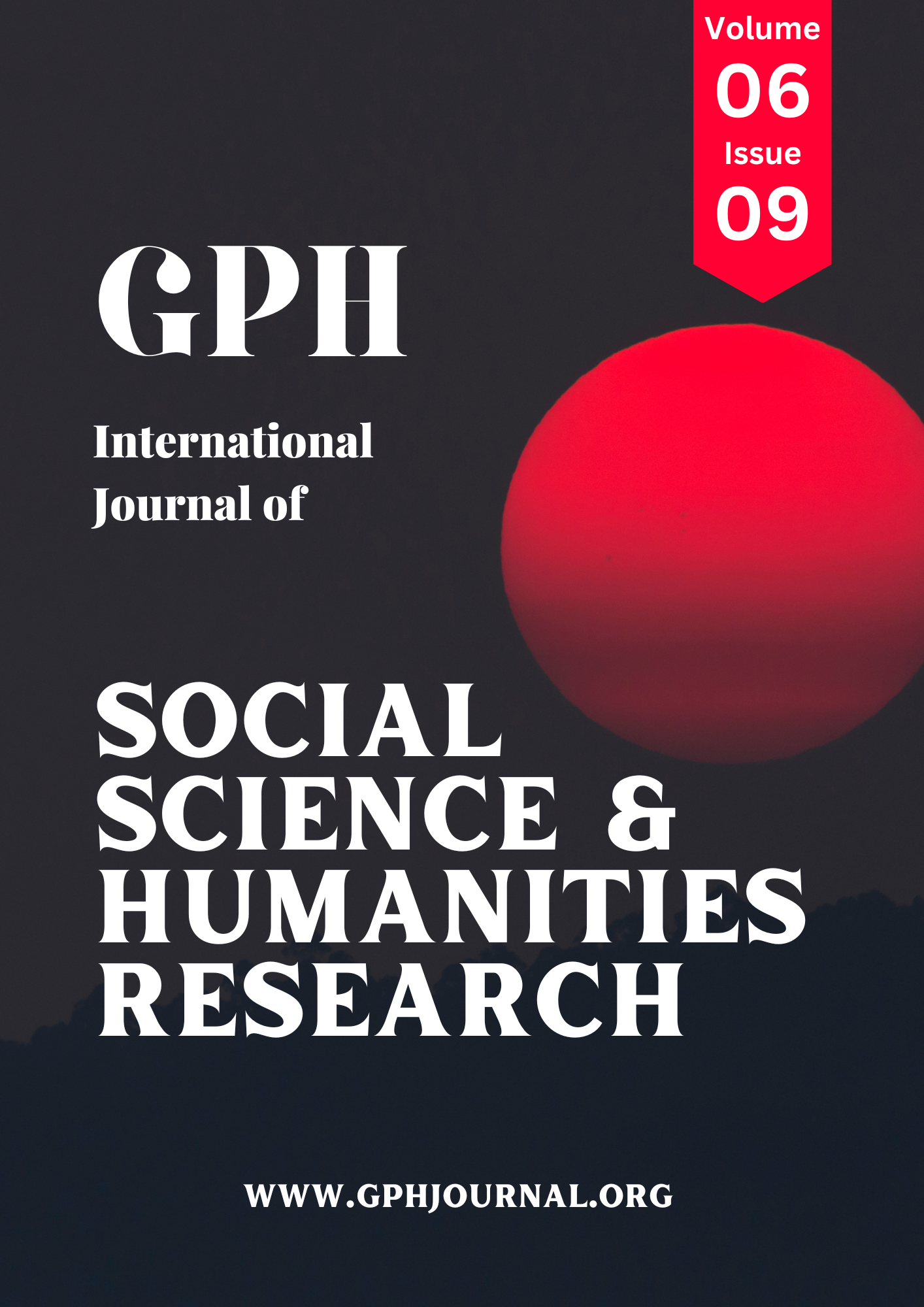Face Strategies in Ahmed Yerima’s Aetu
Abstract
The concept of face is highly significant in interactions given that iteither mares or promotes interpersonal relationships among individuals in interactions. The significance is witnessed in the large volume of scholarly works it drawsin linguistic scholarship. Although existing pragmatic investigations have examined potent aspects of face from diverse perspectives, it is rare to come across a work thatinvestigates face strategies in a feminist oriented play as Ahmed Yerima’sAetu purposefully selected for it is rich in data. This study therefore sets out to examine the face strategies employed by Yerima to project his thematic preoccupations throughBrown and Levinson’s (1978/1987) face framework theory because of its easy adaptability and suitability to the data. We found that positive, negative, and bald on record are the face types that characterize the data. Thepositive face projects mutual respect, negative facesocial factors of power and social distance, andbald on recorddegree of imposition, all relative to Yoruba cultural ethics and practices. These are employed through designated linguistic choices as markers of politeness, respect and difference that are largely responsible for the responses that emanate from normal and extreme casesof politeness thereby showcasing the fact that the performance of politeness or impoliteness is foregrounded relative to emerging events and occurrences in the play. This studygives an insightinto the linguistic choices of politeness relative to the treatment of women in Yoruba culture thereby providing a template for the analysis of such inrelated contemporary African textual universes.
Downloads
References
Awoyemi, Taye (2014) The playwright as a seer: girl-child marriage in Aetu by Ahmed Yerima. International journal of studies in English Language and Literature, vol. 2, issue 9, (pp 6-11) www.arcjournals.org.
Bamgbose, G. (2020) Brown and Levinson’s facework theory in politeness concepts, models and theories:Haytee press and publishing company. Ilorin (pp.32-38)
Brown, P & Levinson, S (1978) Universals in language usage: politeness phenomena in E. Goody (ed.), Questions and Politeness (pp. 56-311).
Brown, P., & Levinson, S. (1987). Politeness: Some universals in language usage. Cambridge, U.K.: Cambridge University Press.
Ehlich, K. (1992). On the historicity of politeness. In R. Watts, S. Ide, & K. Ehlich (Eds.), Politeness in language: Studies in its history, theories, and practice (pp. 71–107). Berlin: Mouton de Gruyter
Goffman, E. (1967) Interaction ritual.Essays on face-to-facebehaviour. New York:Pantheon Books.
Harris, S. (2003). Politeness and power: Making and responding to requests in institutional settings. Text, 23, 27–52.
Haugh, M. (2013).Im/politeness, social practice, and the participation order. Journal of Pragmatics, 58, 52–72.
Haugh, M. (2014).Im/politeness implicatures. Berlin: Mouton de Gruyter.
Kádár, D., &Haugh, M. (2013).Understanding politeness. Cambridge, U.K.: Cambridge University Press.
Kádár, D. (2017). Politeness, impoliteness, and ritual: Maintaining the moral order in interpersonal interaction. Cambridge, U.K.: Cambridge University Press.
Leech, G. (1983). Principles of pragmatics. London: Longman.
Locher, M. (2004).Power and politeness in action. Berlin: Mouton de Gruyter.
Locher, M. (2010). Introduction: Politeness and impoliteness in computer-mediated communication. Journal of Politeness Research, 6, 1–5.
Locher, M., &Langlotz, A. (2008). Relational work: At the intersection of cognition, interaction, and emotion. Bulletin VALS-ASLA, 88, 165–191.
Locher, M., & Watts, R. (2005).Politeness theory and relational work.Journal of Politeness Research, 1, 9–33.
Mills, S. (2003). Gender and politeness. Cambridge, U.K.: Cambridge University Press.
Mills, S. (2005). Gender and impoliteness.Journal of Politeness Research, 1, 263–280.
Oloruntoba, A.O. (2018) Gender and time in Ahmed Yerima’sAetu: Journal of literary studies 34(4): 97-109.
Odebunmi, A. (2009) Politeness and relational work in the print media: political interviews in Nigeria in A. Odebunmi, A. E. Arua and S. Arim (eds) language, gender and politeness. A festschrift for Y.K. Yusuf (pp. 339-356) Lagos: CBAAC.
Tekourafi, M. (2005) Socialising Grice: on interlocutors’ reasons for co-operating in conversation. In Chalcraft, Faye and EfthymiosSipetzis (eds). Cambridge occasional papers in linguistics (COPiL) 2. 235-247
Watts, R. (2003). Politeness. Cambridge, U.K.: Cambridge University Press.
Yerima, A. (2007) Aetu. Ibadan: Kraft Books.
Yule, G.(1996) Pragmatics. Oxford: Oxford University Press.
Copyright (c) 2023 GPH-International Journal of Social Science and Humanities Research

This work is licensed under a Creative Commons Attribution-NonCommercial-NoDerivatives 4.0 International License.
The authors and co-authors warrant that the article is their original work, does not infringe any copyright, and has not been published elsewhere. By submitting the article to GPH-International Journal of Social Science and Humanities Research, the authors agree that the journal has the right to retract or remove the article in case of proven ethical misconduct.














 Firozpur Jhirka, Haryana, India
Firozpur Jhirka, Haryana, India

